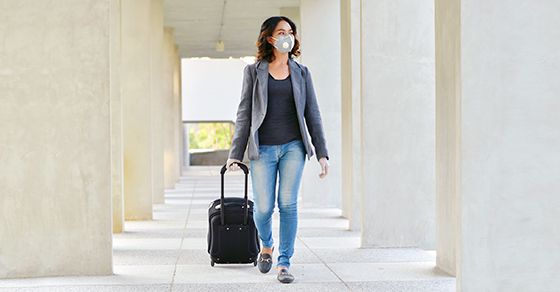In the recent pronouncement, Notice 2020-7, the IRS announced updated per diem rates that can be used to substantiate the amount of business expenses incurred for travel away from home on or after October 1, 2020.
Employers using these rates to set per diem allowances can treat the amount of certain categories of travel expenses as substantiated without requiring that employees prove the actual amount spent. (Employees must still substantiate the time, place and business purposes of their travel expenses.)

The amount deemed substantiated will be the lesser of the allowance actually paid or the applicable per diem rate for the same set of expenses. This notice, which replaces Notice 2019-55, announces:
- Rates for use under the optional high-low substantiation method,
- Special rates for transportation industry employers, and
- The rate for taxpayers taking a deduction only for incidental expenses.
Updated general guidance issued in 2019 regarding the use of per diems under the Tax Cuts and Jobs Act (TCJA) remains in effect.
High-low method
For travel within the continental United States, the optional high-low method designates one per diem rate for high-cost locations and another for other locations. Employers can use the high-low method for substantiating lodging, meals and incidental expenses, or for substantiating meal and incidental expenses (M&IE) only.
Beginning October 1, 2020, the high-low per diem rate that can be used for lodging, meals and incidental expenses decreases to $292 (from $297) for travel to high-cost locations and decreases to $198 (from $200) for travel to other locations. The high-low M&IE rates are unchanged at $71 for travel to high-cost locations and $60 for travel to other locations. Five locations have been added to the list of high-cost locations, two have been removed and 10 that remain on the list are now considered high-cost for a different portion of the calendar year.
Although self-employed persons can’t use the high-low method, they can use other per diem rates to calculate the amount of their business expense deduction for business meals and incidental expenses (but not lodging), or for incidental expenses alone. (Employees can no longer deduct their unreimbursed expenses because of the suspension of miscellaneous itemized deductions by the TCJA, so these other rates are effectively unavailable to them.) The special rate for the incidental expenses deduction is unchanged at $5 per day for those who don’t pay or incur meal expenses for a calendar day (or partial day) of travel.
A simpler process
The per diem rules can greatly simplify the process of substantiating business travel expense amounts. If the amount of an allowance is deemed substantiated because it doesn’t exceed the applicable limit, any unspent amounts don’t have to be taxed or returned. If an employer pays per diem allowances that exceed what’s deemed substantiated, however, the employer must either treat the excess as taxable wages or require actual substantiation. When substantiation is required, any unsubstantiated portion of the allowance must be returned or treated as taxable wages. If you have any questions contact your Rudler, PSC advisor at 859-331-1717 to discuss the potential benefits of utilizing the per diem rules.
RUDLER'S TAX MANAGEMENT & PLANNING TEAM
This week's Rudler Review is presented by Evan Kandra, Staff Accountant and Audrey Goetz, CPA, CVA.
If you would like to discuss your particular tax situation, contact Evan or Audrey at 859-331-1717.


Rudler PSC has established a Tax Management and Planning Team, a group of professionals who specialize in tax services. These highly qualified and experienced tax specialists meet on a regular basis to discuss upcoming client engagements, current issues relating to our clients and regulatory changes. Be sure to receive future Rudler Reviews for advice from our tax experts, sign up today !